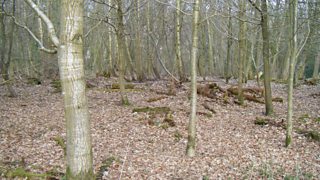How To Write A Blog In An English Exam
Non-fiction text types
Non-fiction texts come in many types, and have many different purposes. They surround us in everyday life but can also come in more sophisticated forms.
Blog

The origin of the word 'blog' is as an abbreviation for 'web-log' – that is, an online diary. Blogs are written by many people all over the world, for lots of different purposes. They can be diaries, or records of what you cook, a travel log for people visiting different destinations or book review blogs, or many other sorts of blogs. The purpose of the writing depends on what kind of blog it is. Blogs:
- often have lots of pictures to make them look attractive
- vary the size, font and appearance of text for effect
- use links to connect to other web-pages
- can include video clips
- are usually quite personal – written in the first person and written partly for the author's own benefit
- the language is often informal and chatty
- may not have a clear audience other than 'anyone who's interested'
Blogs can also be used by organisations to communicate informally with their audience. Because they are online, they can be regular, and respond to events quickly.
Example
This is a post from a blog for people studying English by Victoria Elliot. It talks about a visit to the garden of CS Lewis, who wrote the Narnia books.
An Inkling of another world
This morning I went to Narnia. Sort of.
CS Lewis bought a house in 1930, jointly with his brother and the mother of one his friends who was killed in the First World War, with whom he had lived ever since. The house in question was 'The Kilns', in Risinghurst, a suburb of Oxford. The house then stood at one end of an 8-acre garden, which included a large pond or lake, which was a water filled clay-pit, with a number of brick kilns scattered around it, and a wooded headland. Five acres of this garden are now the CS Lewis Nature Reserve, administered by the Berkshire, Buckinghamshire and Oxfordshire Wildlife Trust, and open to the public to wander around at will.

Local lore has it that this woodland is the inspiration for the Narnia books, written after Lewis moved to the Kilns. This morning it was quiet and empty, despite the sun. A couple of coots were making circles on the lake, although a few ducks emerged later on. The trees were ankle-deep in dead leaves, and there were more than a few muddy holes, some of which were bridged, some not.
But this woodland isn't Narnia; it's the Wood Between the Worlds. It's the place from which you can get to other worlds - the place that Lewis leapt off from. And here and there I began to see where Narnia had crept in. In the clearing at the top I saw the place where Caspian encounters the inhabitants of the forest dancing and vows to restore their country to them. Around the place lie round sandstone boulders, covered with lichen, known as 'doggers': a board tells of the legend that they were used as marbles by the giants who used to live in the mediaeval forests of England. The Silver Chair sprang to mind.
And the best thing about it being the Wood Between the Worlds? It's not just Narnia you can get to from there. There's a forest full of other worlds just waiting to be discovered. I'll be going back to find them.
Analysis
This blog:
- Contains factual information.
- Shows the writer's personal opinion: it is written in the first person.
- Makes reference to the Narnia books, which the audience would be expected to know and be interested in to read the blog.
- Has a photograph of the place that it is describing.
- Uses devices like rhetorical questions to help engage the reader.
- Makes a pun in the title – CS Lewis was a member of a group known as the Inklings. The word Inkling now means a hint or suggestion.
How To Write A Blog In An English Exam
Source: https://www.bbc.co.uk/bitesize/guides/zwx8hv4/revision/7
Posted by: griffithdeally.blogspot.com

0 Response to "How To Write A Blog In An English Exam"
Post a Comment